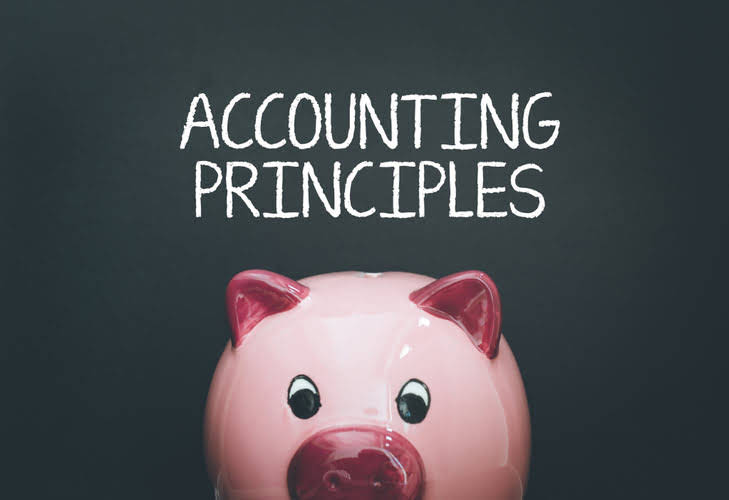Content

The quick ratio differs from the current ratio by including only the company’s most liquid assets — the assets that it can quickly turn into cash. These are cash and equivalents, marketable securities and accounts receivable. In contrast, the current ratio includes all current assets, including assets that may not be easy to convert into cash, such as inventory. If the Net working capital is negative, the company does not have enough current assets to pay off its short-term debt. Although it’s a poor sign, the investor need not base his decision on a single metric. The investor will further dig in by using other metrics like Profit margins, Asset turnovers to determine the financial health of the company.
UNEX HOLDINGS INC. MANAGEMENT’S DISCUSSION AND ANALYSIS OF FINANCIAL CONDITION AND RESULTS OF OPERATIONS (form 10-K) – marketscreener.com
UNEX HOLDINGS INC. MANAGEMENT’S DISCUSSION AND ANALYSIS OF FINANCIAL CONDITION AND RESULTS OF OPERATIONS (form 10-K).
Posted: Mon, 29 Nov 2021 17:53:04 GMT [source]
This article and related content is not a substitute for the guidance of a lawyer , tax, or compliance professional. When in doubt, please consult your lawyer tax, or compliance professional for counsel. Sage makes no representations or warranties of any kind, express or implied, about the completeness or accuracy of this article and related content.
How To Manage Your Small Business Payroll Taxes The Easy Way
Financial modeling is performed in Excel to forecast a company’s financial performance. Or by inputting hardcoded data into the net working capital schedule. If a balance sheet has been prepared with future forecasted periods already available, populate the schedule with forecast data as well by referencing the balance sheet. Put each of these ratios on a financial dashboard so that the information is right in front of you each month.
While each component is important individually, together they comprise the operating cycle for a business, and thus must be analyzed both together and individually. Get instant access to video lessons taught by experienced investment bankers. Learn financial statement modeling, DCF, M&A, LBO, Comps and Excel shortcuts.
Is higher or lower net working capital better?
Broadly speaking, the higher a company’s working capital is, the more efficiently it functions. High working capital signals that a company is shrewdly managed and also suggests that it harbors the potential for strong growth.
The result should indicate whether your working capital level is trending up or down, consistent, or cyclical. These numbers are then analyzed using averages and median values over several time frames, usually 3, 6, or 12-month averages or medians.
When calculating free cash flow, whether it be on an unlevered FCF or levered FCF basis, an increase in the change in NWC is subtracted from the cash flow amount. The reason is that cash and debt are both non-operational and do not directly generate revenue.
How To Calculate Net Working Capital
And avoid buying new technology or equipment when you can lease it for a better return on investment. net working capital For one, it can indicate a company’s potential to grow and invest and avoid bad trade debt.
This indicates that XYZ Ltd can pay all their current liabilities using only current assets. In other words, the company is highly liquid and financially sound in the short term. They can use the extra liquidity to grow their business and expand further.

Current liabilities usually include short-term loans, lines of credit, accounts payable, accrued liabilities, and other debts such as credit cards, trade debts, and vendor notes. Current portions of long-term debt like commercial real estate loans and small business loans are also considered current liabilities. The net working capital ratio measures a business’s ability to pay off its current liabilities with its current assets.
Understanding The Balance Sheet Formula
Net working capital represents the cash and other current assets—after covering liabilities—that a company has to invest in operating and growing its business. In other words, it represents that funds an entity has to cover short-term obligations, such as payroll, rent, and utility bills. The net working capital ratio compares the percentage of a company’s current assets to its short-term liabilities. This ratio can be used to determine whether or not a company has sufficient current assets to cover its current liabilities. Consider the following example of the sale of an operating business.
Increasing working capital requires a focus on current assets, which are easier to change than current liabilities. Calculating business figures can be intimidating, but figuring out a business’s net working capital is actually incredibly easy. Once a business is clear on what its short-term assets and liabilities are, calculating the net working capital is a matter of simple subtraction. Calculating net working capital isn’t difficult once it’s clear what is being factored into the calculations.

Current assets are resources, such as cash and accounts receivable, that a company expects to use up or convert to cash within a year. Current liabilities are amounts of money, such as accounts payable, that a company owes to others and expects to pay within a year. A company’s net working capital is the difference between its current assets—cash, accounts receivable, inventory and finished goods—and current liabilities—debt/accounts payable—. It is used as a measure of liquidity and the company’s ability to meet short-term obligations and fund its daily operations. Ideally, the net working capital balance is positive, meaning that the company has more assets than liabilities. Net working capital is intended to represent those assets and liabilities that are expected to have a short-term impact on cash and equity.
Capstone Fas Managing Director Sheldon Stone Tapped To Lead Michigan Chapter Of Secured Finance Network
NWC that is in line with or higher than the industry average for a company of comparable size is generally considered acceptable. Full BioPete Rathburn is a freelance writer, copy editor, and fact-checker with expertise in economics and personal finance. He has spent over 25 years in the field of secondary education, having taught, among other things, the necessity of financial literacy and personal finance to young people as they embark on a life of independence.
Therefore, assuming that the net working capital is positive (i.e. current assets are greater than current liabilities), the business is likely to be able to generate enough cash to pay these current liabilities. In case the net working capital is negative, the business may have to tap other sources of funding to pay back near-term obligations. As discussed above, net working capital is a reasonably sound indication of the company’s ability to pay off short-term obligations from a range of creditors. The current liabilities section of the balance sheet is a list of all the upcoming payments that the business has to make within the year. Depending on their profile, these current assets can be converted to cash with varying levels of ease. As such, users may opt to exclude certain items from current assets that may not be easily converted to cash in order to provide a clearer picture of the business’s ability to pay back creditors in the near term. Identify whether the company’s net working capital is positive or negative.
Increasing Vs Decreasing Change In Nwc
Common examples of current assets include cash, accounts receivable, and inventory. Examples of current liabilities include accounts payable, short-term debt payments, or the current portion of deferred revenue.
- You can get a sense of where you stand right now by determining your working capital ratio, a measurement of your company’s short-term financial health.
- In this example, assume the company’s total current liabilities are $10,000.
- The selling price of a good or service is the price paid by the buyer.
- A company has negative NWC if the equation produces a negative number or if its working capital ratio, which is current assets divided by current liabilities, is less than one.
This extends the amount of time cash is tied up and adds a layer of uncertainty and risk around collection. While new projects or investments can cause a dip in working capital, negative changes to the NWC could also indicate decreasing sales volumes or inflated overhead costs. As a result, you should calculate change in net working capital as the start of a deeper investigation into efficiency. The reasoning for changing the formulas like this is to examine different areas of the company’s financial health, dependent on what the analyst is most concerned with. However, the first formula is the one that’s most generally used when calculating NWC. If a company has positive working capital, then it has money to invest and grow the business. However, when the working capital is negative, this is an indication that it is in debt.
How To Increase Your Net Working Capital: Step One
Net Working Capital at any date may be a positive or negative number. Net Working Capital increases when it becomes more positive or less negative and decreases when it becomes less positive or more negative. The formula for net working capital , sometimes referred to as simply working capital, is used to determine the availability of a company’s liquid assets by subtracting its current liabilities. In this context, the most useful measure of profitability is return on capital . The result is shown as a percentage, determined by dividing relevant income for the 12 months by capital employed; return on equity shows this result for the firm’s shareholders. Firm value is enhanced when, and if, the return on capital, which results from working-capital management, exceeds the cost of capital, which results from capital investment decisions as above. ROC measures are therefore useful as a management tool, in that they link short-term policy with long-term decision making.
Like many things in M&A, at the surface level, it would appear to be a straightforward calculation to determine how much working capital should be left in the business. However, there are often many nuances to be considered to ensure a fair result for both the buyer and seller.

The inventory turnover ratio indicates how many times inventory is sold and replenished during a specific period. It’s calculated as cost of goods sold divided by the average value of inventory during the period. Net working capital is important because it gives an idea of a business’s liquidity and whether the company has enough money to cover its short-term obligations.
The Quick Ratio
A business with a shorter working capital cycle can operate using less cash than other businesses. If you can collect money faster, you can purchase inventory sooner and fund other needs. The choice between nominal and real cash flows therefore boils down to one of convenience. When inflation rates are low, it is better to do the analysis in nominal terms since taxes are based upon nominal income. When inflation rates are high and volatile, it is easier to do the analysis in real terms. However, net working capital can be more than just a simple measure of liquidity.
What are the key elements of working capital?
Key Takeaways
The elements of working capital are money coming in, money going out, and the management of inventory. Companies must also prepare reliable cash forecasts and maintain accurate data on transactions and bank balances.
You may not talk about working capital every day, but this accounting term may hold the key to your company’s success. Working capital affects many aspects of your business, from paying your employees and vendors to keeping the lights on and planning for sustainable long-term growth. In short, working capital is the money available to meet your current, short-term obligations. Most major new projects, such as an expansion in production or into new markets, require an investment in NWC. However, cash flow will also fall if money is collected too slowly or sales volumes are decreasing, which will lead to a fall in accounts receivable. Companies that are using NWC inefficiently can boost cash flow by squeezing suppliers and customers.
While net income may be preferable, cash is king. We know costs have risen and netbacks have fallen despite rising oil prices. $31m remaining unrestricted cash is potentially problematic for the company if working capital continues see cash outflows. Especially with ONP down.
— Hedgewatch (Brevarthan Research) (@Hedgewatch1) November 23, 2021
Positive working capital allows companies to fund their current operations, pay off short-term bills, and internally finance growth. If a company’s current liabilities exceed its current assets, then the company has a working capital deficit, and may have trouble paying back creditors and fostering growth. However, substantial positive working capital is not always optimal as it may indicate that the business has too much inventory or has not been investing enough of its cash. It is crucial for businesses to be mindful of working capital to remain solvent and grow sustainably. Typicalcurrent assetsthat are included in the net working capital calculation arecash,accounts receivable,inventory, and short-term investments. The current liabilities section typically includesaccounts payable,accrued expensesand taxes, customer deposits, and other trade debt.
2021 guidance adjusted to reflect three main impacts – Yahoo Finance
2021 guidance adjusted to reflect three main impacts.
Posted: Mon, 29 Nov 2021 06:04:44 GMT [source]
It’s a calculation that measures a business’s short-term liquidity and operational efficiency. Working capital includes only current assets, which have a high degree of liquidity — they can be converted into cash relatively quickly. Fixed assets are not included in working capital because they are illiquid; that is, they cannot be easily converted to cash. Cash flow is the amount of cash and cash equivalents that moves in and out of the business during an accounting period. Many businesses experience some seasonality in sales, selling more during some months than others, for example. With adequate working capital, a company can make extra purchases from suppliers to prepare for busy months while meeting its financial obligations during periods where it generates less revenue. Because small business owners’ business and personal finances tend to be closely intertwined, lenders will also examine your personal financial statements, credit score and tax returns.
Author: Edward Mendlowitz